New Study: 48 Wildlife species use uprooted longleaf pine root mounds
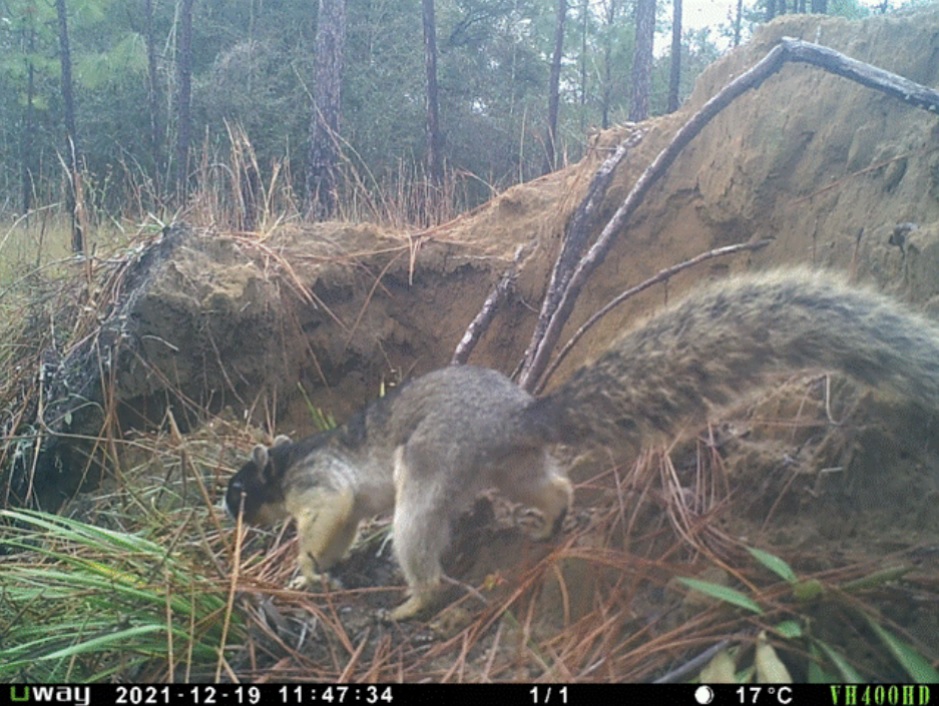
We partnered with the Herpetology lab in a new study which showed that uprooted longleaf pine tip-ups—created when trees fall—provide a brief but critical wildlife habitat. Using >1 million camera-trap photos, we documented 48 vertebrate species using the mounds to forage, perch, bask, or shelter. The study highlights how even short-lived storm features support biodiversity and should factor into post-disturbance management decisions.
New Study: Terrestrial lidar provides accurate and objective measures of crown scorch

A new study from our lab shows that terrestrial LiDAR scanning (TLS) can measure crown scorch in longleaf pine with unprecedented speed and objectivity. TLS provides high-resolution, quantitative estimates of fire-caused crown damage—at least 20× faster than traditional ocular methods. The CrownScorchTLS R package makes these tools accessible for researchers and land managers, enabling more precise, mechanistic studies of fire impacts on forests.
New paper: Optimizing forest restoration to boost streamflow in Georgia watersheds
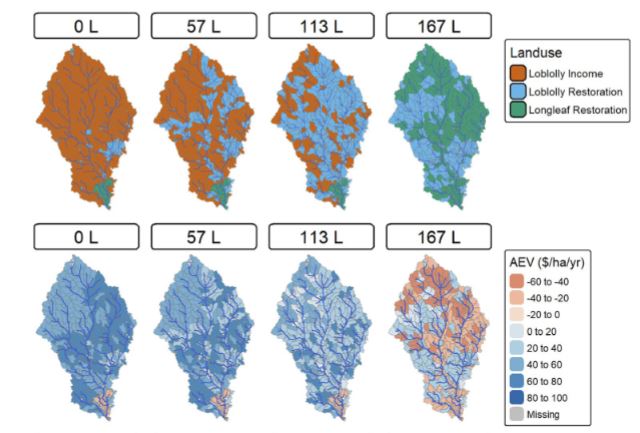
Can restoring pine savannas improve water flow? Our lab’s new study, led by Chambers English and Seth Younger, shows how forest restoration can be strategically optimized to meet streamflow goals in Southwest Georgia. Using vegetation and hydrologic modeling, the team identifies the most cost-effective areas for pine savanna restoration to support ecological and economic goals.
New study: Advancing hurricane ecology in endangered systems

Longleaf pine savannas are iconic and endangered ecosystems along the Gulf and Atlantic coasts, but intensifying hurricanes pose a growing threat to their persistence. Our team reviewed storm impacts across the longleaf range and found that 85% of remaining habitat experiences tropical storm-force winds every six years. We identified key risk factors—like fire, insects, and salvage logging—that can compound management challenges and delay recovery. This study, published in the journal BioScience highlights the need for climate-informed management strategies that build resilience in the face of increasingly frequent storms.
New study: Mitigating hurricane damage in pecan
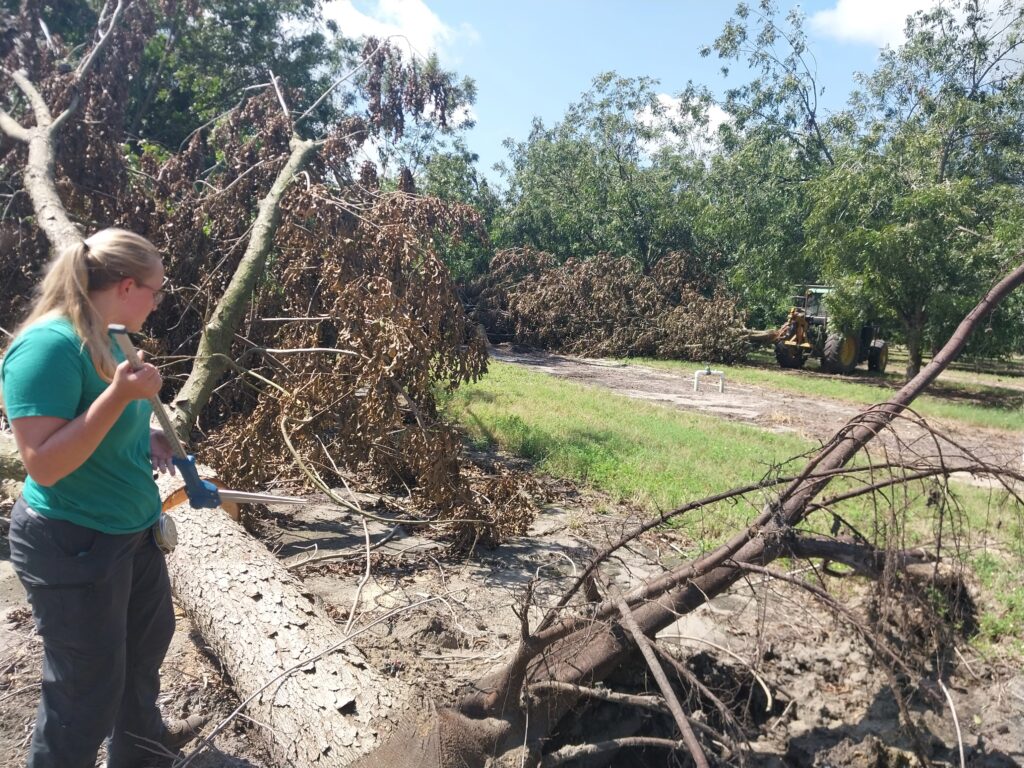
Pecan orchards are a vital part of southern Georgia’s working landscapes, but recent hurricanes have caused severe losses to growers. In a post-storm field study, our lab surveyed over 1,100 trees across 11 orchards following Hurricane Idalia to understand patterns of wind damage. We found that intermediate-sized trees were most vulnerable and that orchard age structure plays a key role in storm resilience. These findings provide a foundation for climate-smart practices that can reduce risk and improve long-term sustainability.
New study: Patchy longleaf pine regeneration changes fuels and fire behavior
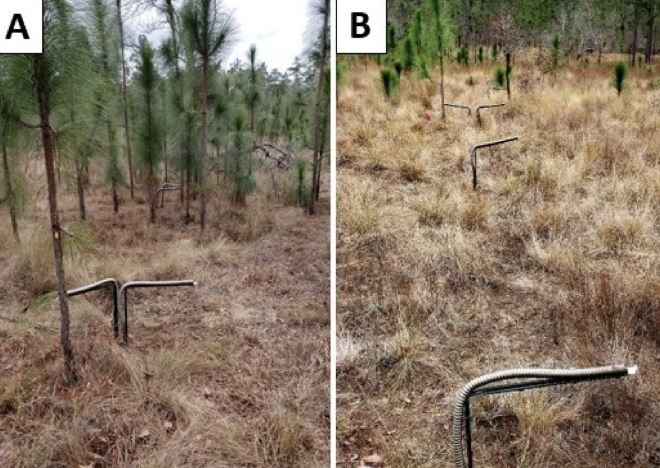
Longleaf pine ecosystems depend on frequent fire which changes competitive and growth dynamics of the ecosystem. However, fire behavior is complex and driven by complex feedbacks between fire effects, fuels, and vegetation. In an intensive field study, we investigated how dense patches of longleaf pine regeneration can change fuels and fire behavior compared to regenerating saplings occuring singly. We found that regeneration have altered fuels, and often reduced fire behavior in a manner that likely shapes spatial dynamics in the ecosystem
New study: Identifying defects in damaged trees to improve guidance for timber salvage
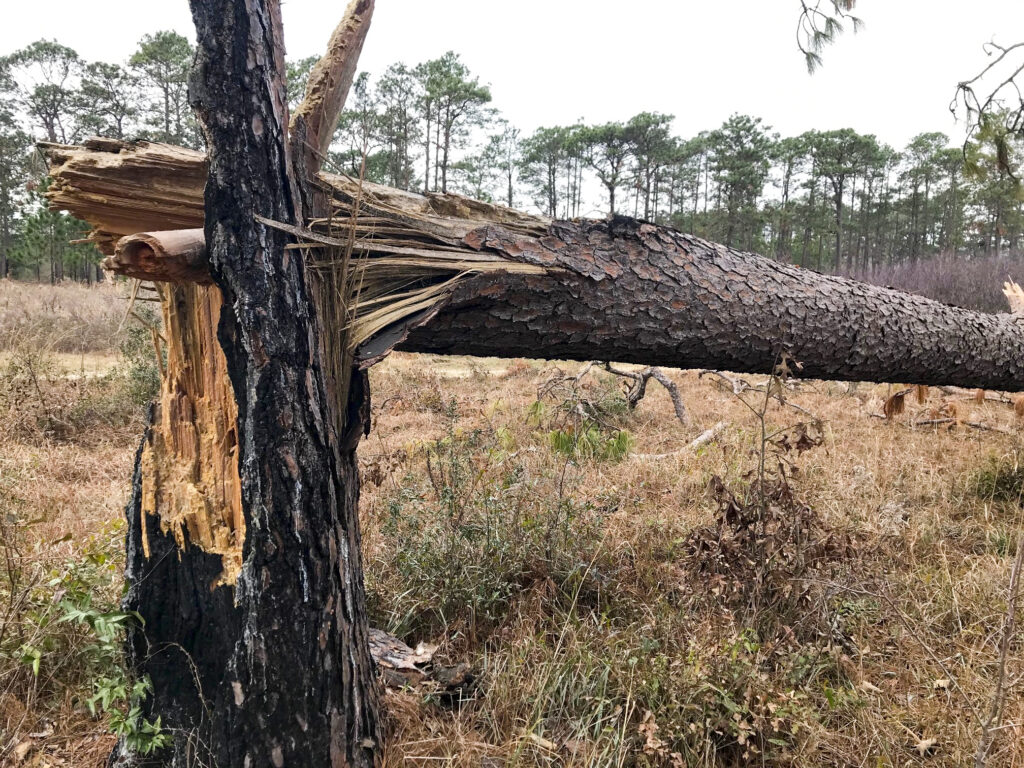
Trees damaged by severe winds experience twisting and snapping that damages useful parts of the tree bole. Visible damage is readily visible on lower portions of damaged trees, but unseen defects can extend further up the bole. Thus it can be difficult for loggers to determine wood quality and merchantability during post-storm timber salvage. We used acoustic measurements to find wood defects and found that traditional guidelines are too conservative. We provide guidance for loggers to help safely harvest substantially more of the bole after severe winds.
New study: Overstory and litter properties drive fuel dynamics
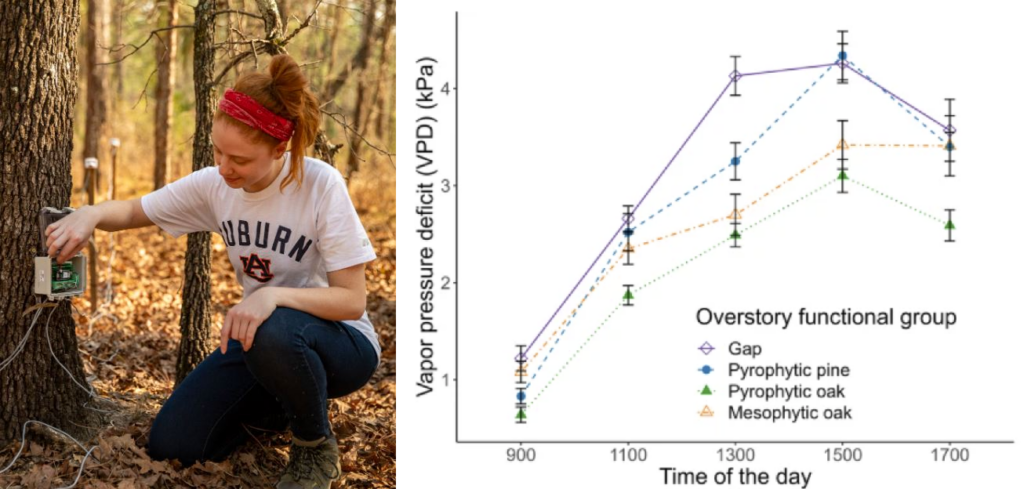
The composition of fire-dependent forests can shift after decades of fire exclusion. Forests can shift to trees with distinct overstory and leaf litter traits that can further suppress fire and make restoration difficult. We compared how leaf litter and overstory properties differed between fire-adapted pines and oaks, and the non-fire adapted species that often encroach after fire suppression. We found that trees produced distinct microclimates and that drying properties of leaf litter varied among species. This information is useful for understanding mesophytic encroachment and for accelerating successful restoration efforts
New study: Precipitation can increase stability of some trees in wind storms
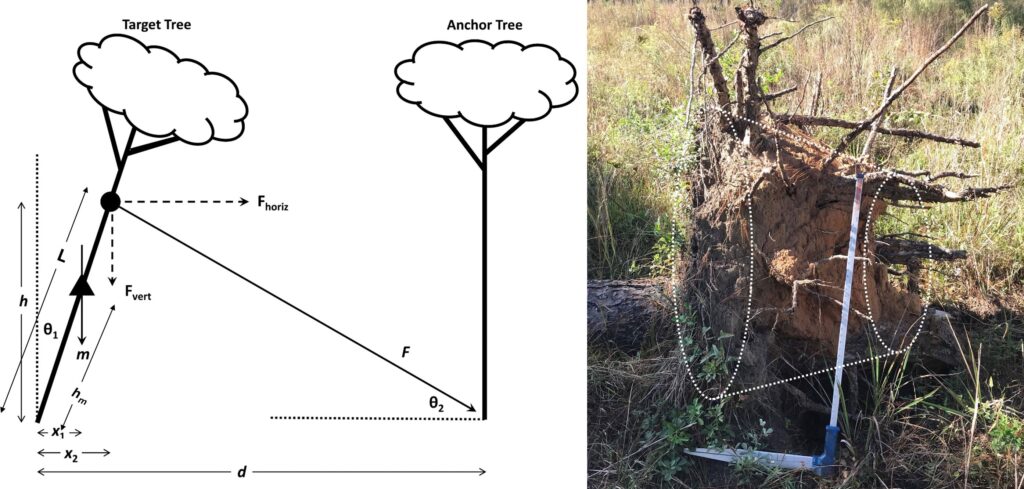
Root anchorage is one of the main drivers of tree stability in wind storms. Tree winching help to understand forces that tree can withstand. We compared stability of two pine species after wetting the soil and uncovered that wet soil can actually *increase* tree strength by add weight to the root mass. This experiment helped resolve a paradox of soil moisture by distinguish the opposite effects of long-term and short-term soil moisture.
New study: Regeneration and microclimate patterns in a structurally diverse ponderosa pine forest
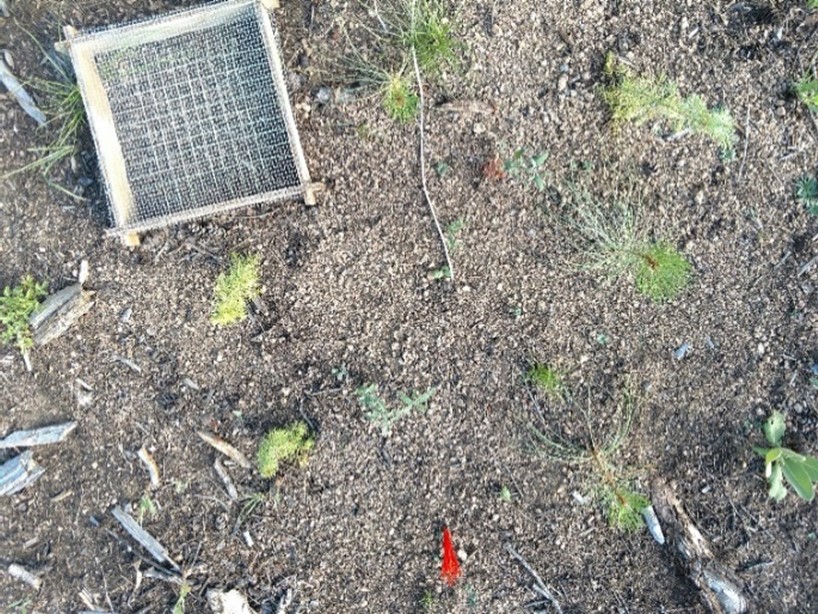
Forest restoration treatments in ponderosa pine forests of the western US emphasize creation and maintenance of complex forest spatial pattern. Patterns of canopy cover and light can alter microclimate and impact seedling germination and growth. We studied fine-scale abiotic conditions and seedling dynamics for 3 years in a dry conifer forests near Denver, Colorodo. We found that canopy cover was important for mitigating extreme conditions, but that survival of all species was greatest in warm dry microclimates.